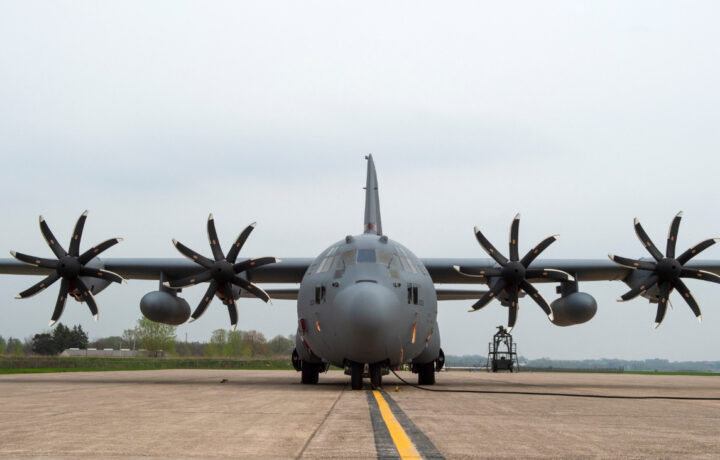The United States Air Force has operated several variants of the Boeing 747, including the E-4 Emergency Airborne Command Post and the YAL-1, which was employed to test experimental low-power lasers that could destroy tactical ballistic missiles (TBMs) while in their boost phase. The Boeing E-7 Wedgetail airborne early warning and control (AEW&C) aircraft is based on Boeing’s 737 Next Generation design.
Transforming civilian aircraft for military needs dates back to the Second World War.
That included the C-47 Skytrain, a version of the Douglas DC-3 airliner, and the AC-47 Spooky, an aerial gunship based on the British Dakota transport plane.
Civil Reserve Air Fleet
In addition to modified civilian aircraft, the U.S. military has a partnership in place that allows for the use of such aircraft should the need arise.
Today, the Civil Reserve Air Fleet (CRAF) is a program that also allows civil air carriers to “volunteer” aircraft to augment the Department of Defense’s aircraft needs in a time of war or other national defense crisis. A decade ago there were 24 carriers and 553 aircraft enrolled in the CRAF.
“To participate in the international segments of CRAF, carriers must maintain a minimum commitment of 30 percent of its CRAF capable passenger fleet and 15 percent of its CRAF capable cargo fleet. Aircraft committed must be U.S.-registered and carriers must commit and maintain at least four complete crews for each aircraft,” the Air Force explained.
Military Aircraft Adapted to Civilian Use
There are far fewer examples of military-designed airplanes transported to civilian uses – yet, it does include the Lockheed Martin L-100 Hercules, a civilian variant of the C-130 Hercules. Introduced in the mid-1960s, there has been a popular transport that has proven so successful it was most recently updated as the LM-100J, which completed its first flight in Marietta, GA in May 2017, with production beginning two years later.
However, it is another version of the C-130 Hercules that has been in the news this year. The first of seven originally built as air tankers purchased by California was retrofitted, but not to conduct in-flight refueling. Rather the former tanker was modified to fight wildfires.
“The climate crisis has made wildfires more destructive, and we need to match these threats with new resources. This aircraft will beef up CAL FIRE’s ability to hit fires earlier and harder, better protecting Californians,” said California Governor Gavin Newsom last month when the aircraft entered service.
“It’s part of our overall strategy that adds more boots on the ground and state-of-the-art technologies to CAL FIRE’s world-leading capabilities, along with our huge ramp-up in forest management,” Newsom added.
The C-130H is ideally suited to that role, capable of flying 800 miles with a payload of 4,000 gallons of fire retardant. It is now the aircraft with the greatest speed and range of Golden State’s CAL FIRE airborne fleet. The effort to bring the C-130H aircraft into service as CAL FIRE air tankers began in 2018 when California secured approval to acquire seven that were being retired from the United States Coast Guard.
It was only after lengthy delays that lawmakers passed the National Defense Authorization Act (NDAA) on December 14, 2023, which finally enabled the transfer of aircraft from the federal government to California, where CAL FIRE could complete the aircraft’s retrofitting. CAL FIRE’s Aviation Management Unit took charge of the modifications to the Hercules aircraft, which included the installation of a 4,000-gallon tank and a specialized retardant delivery system (RDS).
“As wildfire frequency and severity increase across California, the introduction of this aircraft will undoubtedly play a crucial role in helping us achieve our initial attack goals, particularly in our efforts to keep 95% of fires at 10 acres or less,” explained CAL FIRE Chief Joe Tyler.
The Golden State, which continues to suffer through annual and devastating wildfires, has built up the largest aerial firefighting fleet in the world. The addition of the C-130Hs will help state firefighters battle the blazes, and the seven aircraft will be strategically located throughout the state at CAL FIRE bases to mobilize when needed, adding to the helicopters, other aircraft, and firefighters ready to protect Californians.



